Family : Lygaeidae

Text © Prof. Santi Longo

English translation by Mario Beltramini
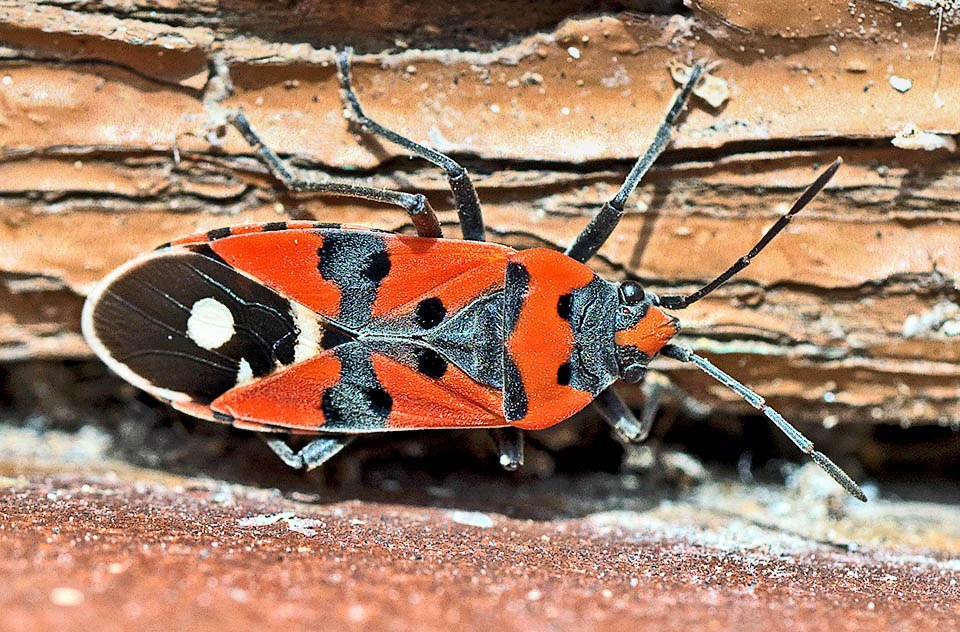
Protected by its aposomatic warning livery, the Black-and-red-bug (Lygaeus equestris) is very common in most of Europe © Joan Escobet Casals
The Black-and-red-bug Lygaeus equestris (Linnaeus, 1757) is a Heteropteran True bug of the family of the
Lygaeidae Schilling, 1829, that includes about one thousand of species characterized by small or medium sized oblong body with dark or reddish colourations or red, or orange, and black.
The antennae are formed by 4 articles and the femurs of the front legs are often swollen and equipped with sharp processes.
Some species are meiopteran or brachypteran that is having wings reduced compared to those of similar species.
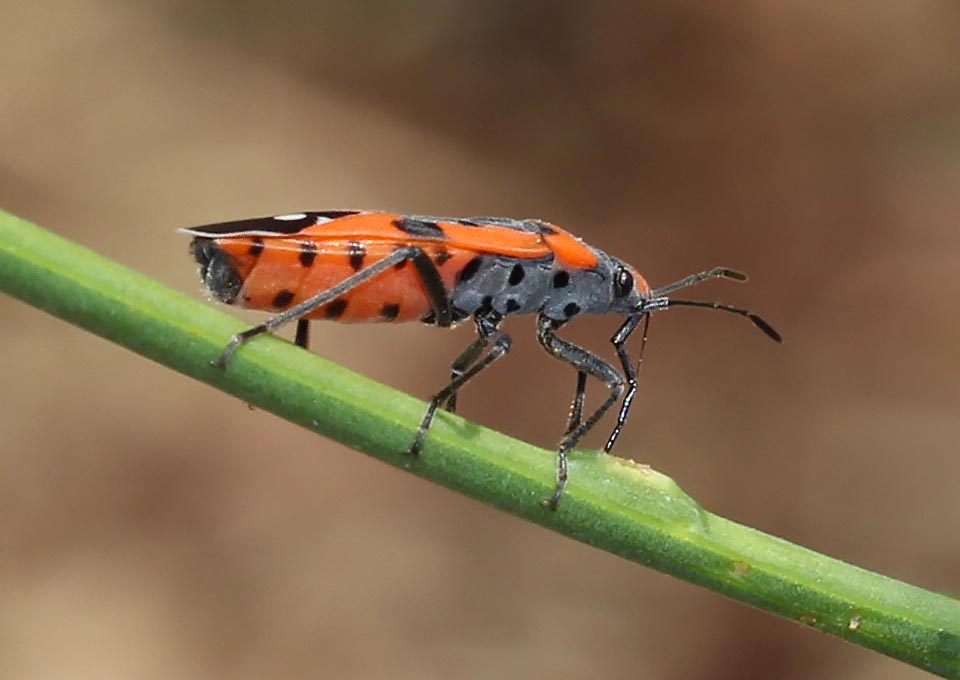
1O-12 mm long, it’s a phytomizoan insect, feeding on vegetal humours with its sucking pungent apparatus © Pete Woodall
They are insects called phytomythic because with their stinging and sucking apparatus they feed on vegetal humours.
The chromosomal set of some species has been the subject of the first important genetic research on heredity.
The name of the genus Lygaeus established by Fabricius in 1904, comes from the adjective “lygaios” that means dark, gloomy, depressing (from “lùghe”, dusk) that in the Greek mythology is the name of the acarnic father of that Polycaste, wife of Icarus and mother of Penelope, of Alyzeus and Leucadius.
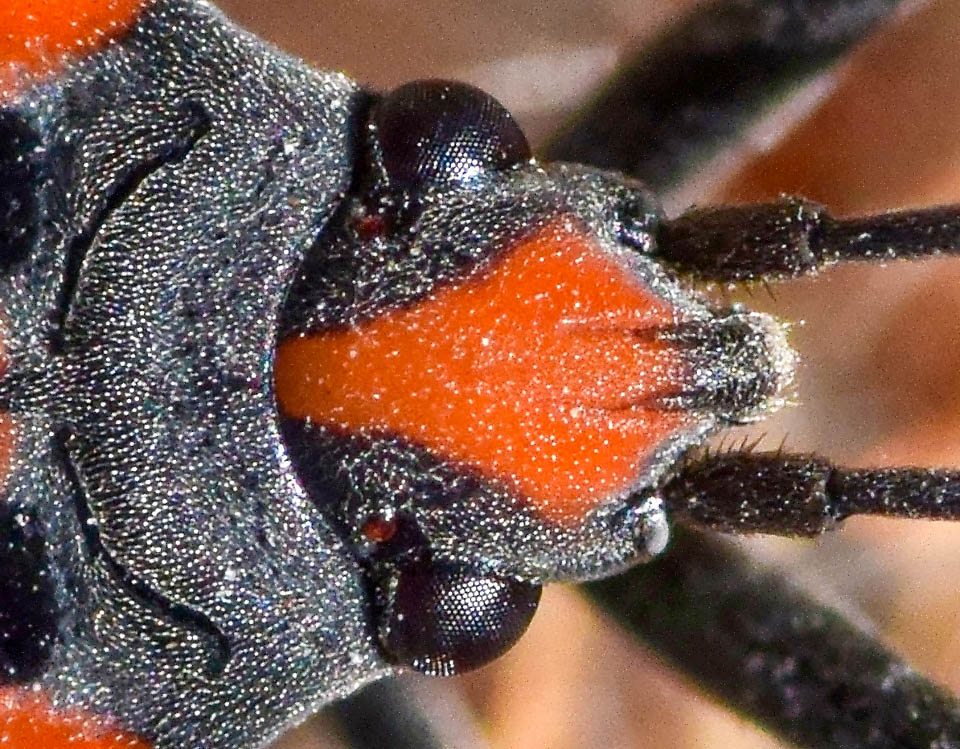
The head is short, having small simple eyes, called ocelli, and showy compound eyes © Barış Çerçi
The specific epithet equestris, from the Latin equestrian, refers to the social class of the riders.
Zoogeography
It is a species diffused in the Palaearctic and is quite common in most of Europe, especially central and southern and is reported in Iran.
Ecology-Habitat
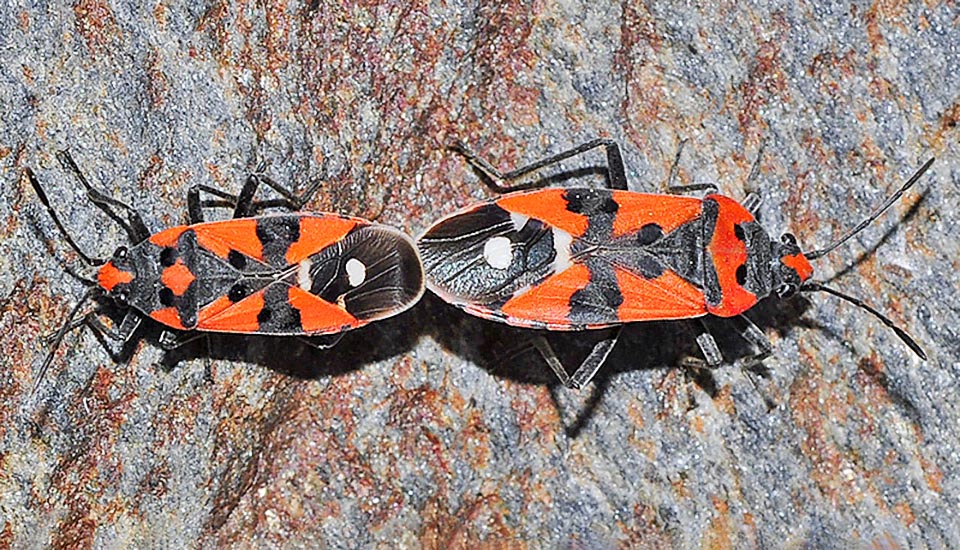
Mating occurs in spring. Females lay eggs on the poisonous Vincetoxium hirundinaria. The larvae, feeding on the seeds, become toxic and are avoided by predators © Francisco Rodriguez
All biological stages of Lygaeus equestris live in the meadows and along the sunny edges of wooded areas where is present the poisonous host Apocynacea Vincetoxium hirundinaria Medik, to which are bound the young monophagous neanids.
Morphophysiology
The adults are 10 to 12 mm long. The body is oval with developed wings; the integument has a showy warning colouration, or aposematic, characterized by two transversal bands forming a black cross at the center of the front wings, or hemelytra, of red colour by a white dot on the back membranous wings that overlap when in the state of rest.
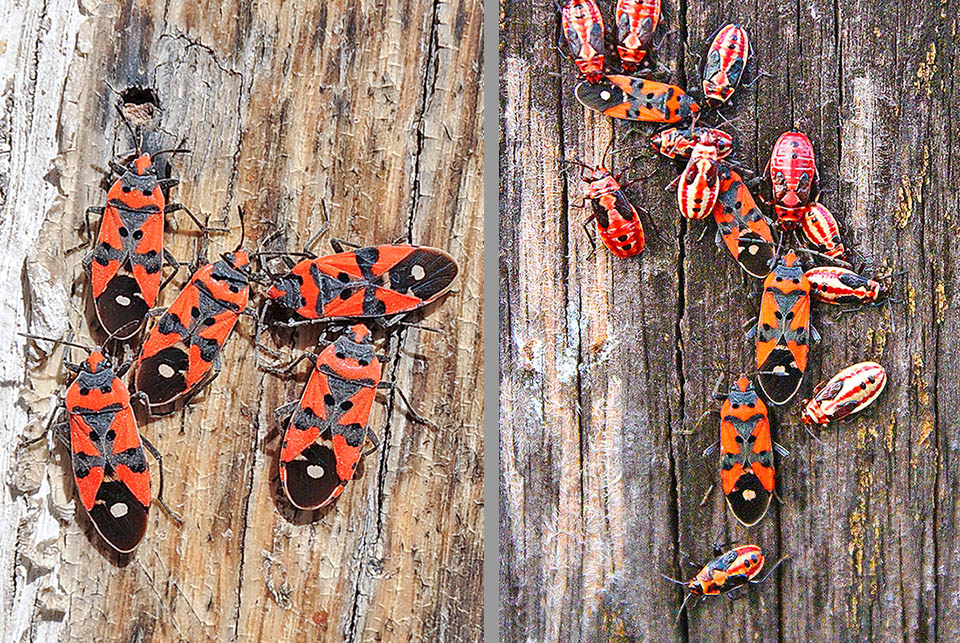
At first cold it’s a gregarious species. Left, some adults and, right, adults mixed to nymphs at various stages of growth © Per Arvid Åsen (left) and © Marcell Kárpáti
The head is short and provided of simple eyes, or ocelli, as well as of compound eyes close to which is present a black band wider than the latter ones. The antennae are formed by 4 articles of which the second is slightly more enlarged and longer than the following two.
The docciform lower lip, or rostrum, formed by 4 segments, is, when in the state of rest, receiving the buccal stylets.
The dorsal part of the first segment of the thorax, or pronotum, is trapezoidal with a short and marked anterior constriction.
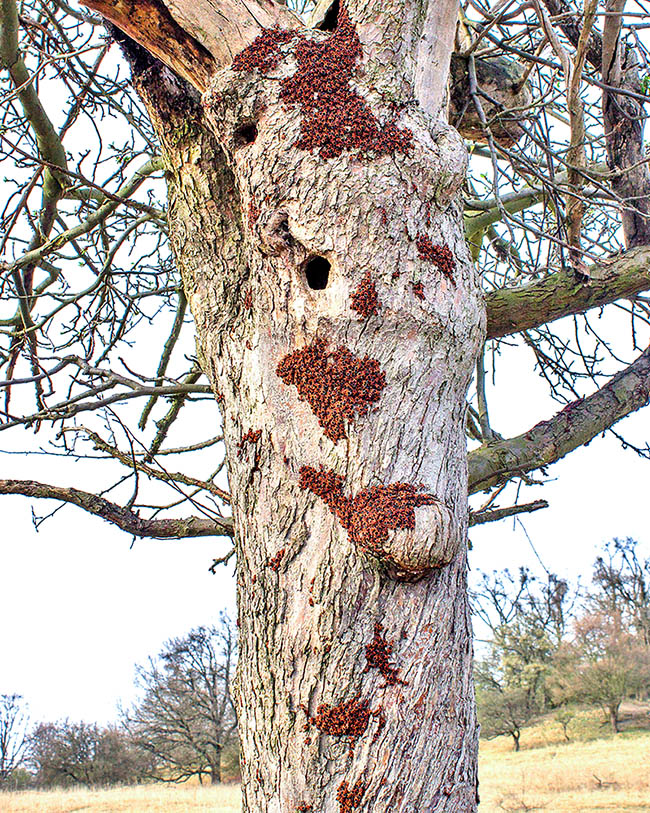
Tree in winter dress with several aggregations of Lygaeus equestris © Jindra Lacko
The scutellum of the second thoracic segment of the adults of Lygaeus equestris is short; and differs from ttah of the congeneric species because it has no straight bristles but presents only small black hairs.
On the fore wings, pertinent to such a second somite stand two transversal bands.
The third segment of the thorax has the rear membranous wings crearer on the proximal part on each of which, crossed by 4 or 5 veins, appears a round white spot that, when the wings overlap, looks unique.
The legs have tarsi formed by three segments. The femurs of the fore legs are dilated.
In the dorsal part of the abdominal urites are present the breathing openings or stigmas.
The first two juvenile stages, or neanids, recognizable due to the absence of the wing buds, are of red colour with black legs and antennae.
The following three preimaginal stages, or nymphs, dorsally display black coloured wing buds.
They feed even on the humours of plants different from those of the monophagous neanids.
Ethology-Reproductive Biology
In the cold season many adults together with some nymphs do aggregate in more or less numerous groups under the stones, on the bark of big trees, or among the leaves on the ground.
In spring they resume their activity and feed stinging the seeds of various plants; when they reach the sexual maturity they mate and the females lay the eggs on the neanids feeding plants.
The postembryonic development is of heterometabolic type with juvenile stages similar to the adults.
From the eggs get out the neanids of first age that, like those of the following stage, are monophagous and nourish only of the seeds of the poisonous Apocynacea who confer toxicity to them towards the predators.
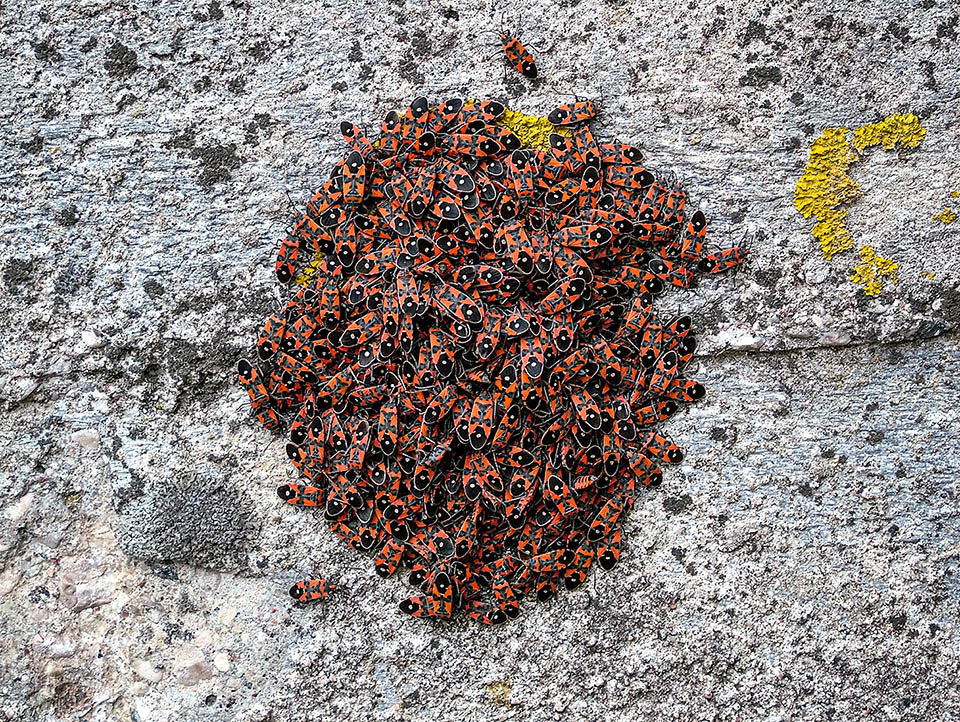
They can merge in dense groups on barks, stones or among leaves on the ground © Ann-Sophie Qvarnström
The two neanidal stages are followed by the three nymphal ages, recognizable by the presence of the alar buds and finally the adults that feed stinging and sucking the humours of several plants.
Synonyms
Cimex equestris Linnaeus, 1758. Three subspecies have been described: Lygaeus equestris equestris (Linnaeus, 1757); Lygaeus equestris lactans (Horvath & G., 1899) e Lygaeus equestris sicilianus (Wagner, 1955).
→ To appreciate the biodiversity of RHINCHOTA or HEMIPTERA click here.
